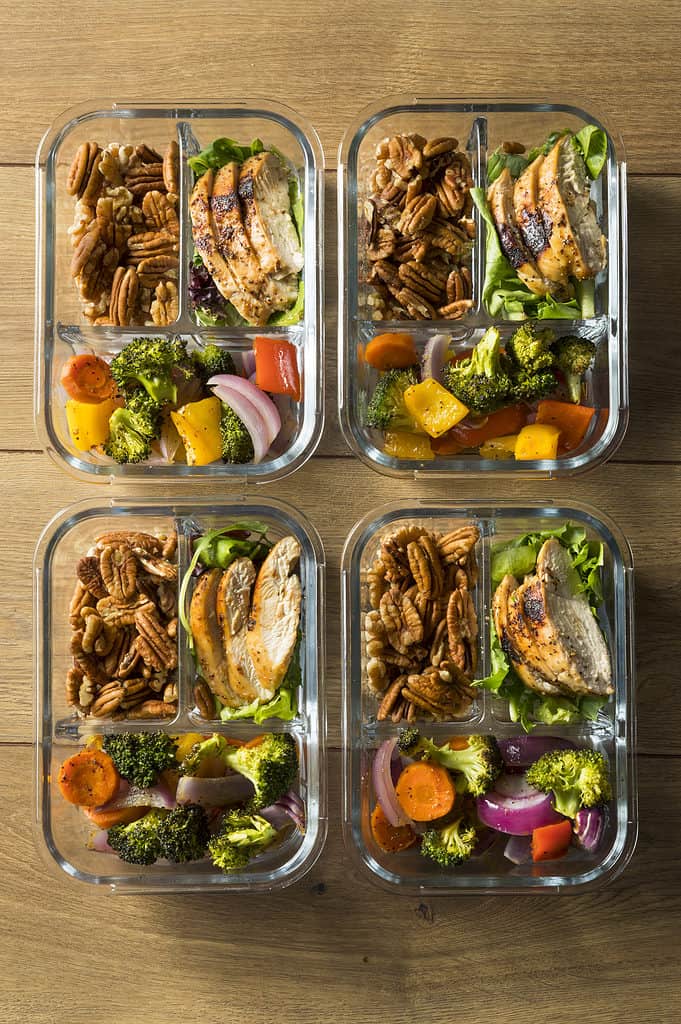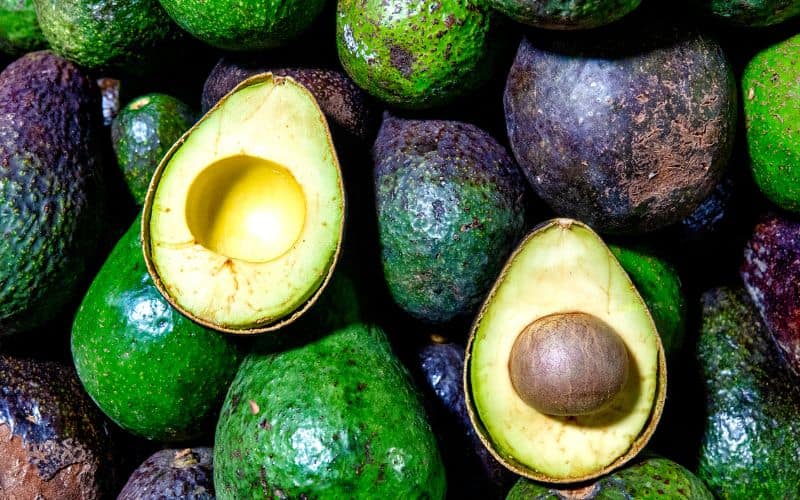
Is the Whole30 Diet for You? A Health Coach’s Guide · Seasonal Cravings
The New Year brings stress and anxiety about our health and diet plans for the future. If you want to reset and create new healthy eating habits, the Whole30 Diet could be for you. It is one of the most popular diets to start in January, and I often recommend it to my health coaching clients.

What is the Whole30 Diet
Whole30 is a strict 30-day diet program focusing on resetting your health and relationship with food. After the thirty days of restriction, there is a ten-day reintroduction of foods where you monitor and assess which foods may have been bothering you.
According to the founder, Melissa Urban, “Certain foods could be having a negative impact on your body composition, health, and quality of life without you even realizing it.” She says that eliminating these problematic foods could change your life.
The diet requires you to give up sugar, alcohol, grains, dairy, additives, and legumes for 30 days while focusing on eating whole foods. Yes, those are big asks, but thousands of people say they see benefits from this program. For many, it is not a “diet” but a nutritional program.
The science behind the Whole30 Diet is mixed. As reported by The Cleveland Clinic this diet can be effective at helping you assess whether you have food intolerances. Figuring this out can greatly improve your energy levels, digestion, weight, and general quality of life.
Many people suffer symptoms of intolerance to dairy and gluten and don’t even know it. The symptoms of food intolerance can be annoying and include bloating, diarrhea, gas, and fatigue.
Not only that, but the Whole30 program cuts out other trigger foods like sugar and alcohol, which can cause inflammation in the body resulting in chronic pain. Diets high in sugar can lead to insulin resistance, low-grade inflammation, and obesity.
For many people, this program can yield big results since it focuses on eating healthy, real foods like fruit, vegetables, nuts, seeds, eggs, lean proteins, and fat. One of the big criticisms about this diet is that it completely removes dairy and grains, which are part of the USDA MyPlate Food Groups. As a health coach, I feel comfortable recommending this way of eating because it is only for thirty days. If you find that you have a gluten or dairy intolerance after thirty days, it has been worth your time and effort.
Why My Clients Like Whole30
I have seen many clients succeed in losing weight with the program, but even more important are the other benefits they see.
This program helps people fight their sugar addiction. Giving up sugar for thirty days changes your taste buds and allows you to discover the natural sweetness in foods.
When you have sugar again after this hiatus, it will not taste the same! In fact, you most likely will not crave it anymore. The natural sugars found in raspberries, strawberries, and apples will be enough to satisfy your cravings.
Some of my clients form a new relationship with fat. You may remember the low-fat diet craze of the 1970’s when we were all stocking up on low-fat junk food. We know now that fat is not the enemy we once thought it was.
According to the Harvard School of Public Health, good fats like monounsaturated and polyunsaturated can be an important part of a healthy diet and even lower disease risk.
Examples include avocados, whole eggs, dark chocolate, nuts, salmon, chia seeds, olive oil, and tofu.
According to Dr. Alex Robles, “It is essential to know that Whole30 is not a long-term diet. Eliminating several food groups may lead to nutrient deficiencies if your diet is not carefully planned. You should use Whole 30 as a short-term plan to kickstart healthy eating habits, followed by a calorie-controlled nutritional program encompassing a wide variety of nutritious foods.”
Meghan Punda, NP at Nourished and Well, says, “My clients find the Whole30 diet is a great reset for their bodies. They report decreased food cravings, increased energy, improved digestion, identification of food sensitivities, and improved balance with hormones and blood sugars. It allows people to take control of their health, starting with nutrition.”
Whole30 Rules
The basics of the Whole30 Diet are pretty straightforward, and once you get used to your new shopping list, you will be good to go.
I’m not saying it will be easy because it takes a lot of willpower, but it will pay off if you stick with it.

Whole30 Approved Foods
- vegetables, including potatoes
- fruits (recommended two per day)
- meat (preferably grass-fed)
- fish
- poultry
- natural fats
- clarified butter or ghee (the only dairy)
- fruit juice as a sweetener (go easy)
- green beans, snow peas, and sugar snap peas (these are technically legumes but are allowed)
- vinegar (no malt vinegar, which contains gluten)
Do Not Eat
- sugar (goodbye processed foods)
- alcohol
- grains (wheat, rye, barley, oats, corn, millet, bulgar, amaranth, buckwheat, quinoa, and sorghum)
- legumes (beans of all kinds, soy, peanuts, tofu, tempeh, edamame, soy sauce, and soybean oil)
- dairy (cow’s milk and sheep’s milk products)
Other Rules
- Do not recreate junk and dessert foods with approved foods like Whole30 pancakes, waffles, muffins, protein balls, etc. Stick to the basic rules for the greatest success. If the point here is to break the junk food habit, you cannot do that by simply recreating it in a different form. Not everyone follows this rule, but if you are doing a strict Whole30 this is required.
- Do not weigh yourself. Oh, that’s a challenge, I know, but the point here is non-scale victories and overall health benefits, not just the number on the scale. This goes a long way to improving your relationship with food.
- Do not give up if you have a slip-up. These things happen; get over it and move on your way to food freedom.
Favorite Whole30 Essentials
- Clarified butter or ghee
- Olive or avocado oil
- Sesame oil
- Almond or coconut milk (plain)
- Nutpods non-dairy creamer
- Whole30 compliant, mayonnaise, mustard, hot sauce, and ketchup
- Meat, fish, and seafood
- Canned salmon, tuna, and chicken
- Almond flour (when you need breading on meat)
- Coconut aminos (to replace soy sauce and Worcestershire )
- Vinegar (for homemade salad dressing)
- Bone broth (for soups and stews)
- Unsweetened apple sauce
- Jerky
- Raw nuts
- La Croix or Bubly water
- Rx or Lara Bars
Easy Whole30 Recipes
Breakfast
Lunch
Dinner
Difference Between Whole30 & Paleo
The Whole30 and Paleo diet plans are very similar in the list of foods you can and cannot have but where they vary is the plan’s implementation.
The paleo diet is based on what our hunter and gatherer ancestors may have eaten. The goal is to eat this way to prevent disease and lose weight. The Whole30 diet is only for a 30-day period and aims to help you discover any food intolerances you may have that are affecting your health.
Since they both cut out the same restricted foods, the only significant difference is the time period suggested to follow the diet. Whole30 is more of a temporary challenge that encourages you to reintroduce some of these foods after one month and helps you to work them back into your diet if you can tolerate them. The paleo diet suggests these restrictions are a permanent way of eating.
What is Plant Based Whole30
Plant based Whole30 is quickly gaining popularity as people discover benefits from consuming fewer animal products. The rules are a little different with this program and more restrictive.
- no animal proteins
- no animal fat
- no animal sourced dairy (ghee & clarified butter)
Most Popular Whole30 Cookbooks
Sources Used in this Article
